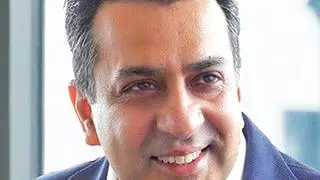Industry is waiting for the Department of Telecom to release some airwaves in the V and E bands for faster broadband networks.
While the government is working on laying down optical fibre to connect India through broadband, the industry wants these bands — E band is in the range of 80 GHz and V band is in the 60 GHz range — also to be released.
Generally as the airwaves go higher and higher in frequency, the distance covered reduces. These bands do not go long distances, but can be used in a radius for faster speeds.
Although the Telecom Regulatory Authority of India, in its recommendations ‘Allocation and Pricing of Microwave Access and Microwave Backbone Radio Frequency Carriers’, sent its responses to DoT in November 2015, there is no update from the DoT yet.
Conventionally, the normal microwave is used, which can handle voice but it cannot handle data beyond a limit and, therefore, the E band and V band are required.
Rising data usageAs data usage in the country is increasing, especially with telecom companies launching 4G services, the speed will become slower as the usage pattern increases, TV Ramachandran, President, Broadband India Forum, told BusinessLine .
“The E band goes only for short distances — it is like high frequency and will go for a few kilometres — 2-10 km, depending on the type of terrain.
“And, places where the optical fibre can’t reach, there you have got a golden solution for that problem (by using E and V bands). And that is the way one is going to be able to handle the data which is arising,” he said.
He said, like most countries, India should also de-license these frequencies to cater to the huge demand in the near future.
While a lot has been discussed on making the ‘Digital India’ dream a reality, there are a lot of dots that need to be connected to make it a success, he said.
A lot of things need to be ‘de-jargonised’ or ‘simplified’ for current and prospective internet users and communication stakeholders to understand related technology interplay, he said.
Connecting panchayatsHe said the government may be working on connecting all the panchayats through the Bharat Broadband Network (BBNL), but the optical fibre cannot reach every nook and corner of the country and such bands would help connecting those places.
For example, “In a rural area I was taking the fibre right up to bottom of a hill and then there is a terrain through which I can’t go, I can’t take;then if I use E or V band, I can reach out to villages in that difficult spot. So both in rural and in dense urban, it is very useful,” Ramachandran said.
But, having said that, optical fibre is very much required, he said, adding that such bands will also complement the Wi-Fi hotspots that telecom operators like Bharti Airtel, BSNL and others are launching across the country.
Meanwhile, the Broadband India Forum is organising an event — ‘Accelerating Broadband for India’ — wherein it will discuss a lot of issues and policies around such bands with senior leaders of the government, on Wednesday.








Comments
Comments have to be in English, and in full sentences. They cannot be abusive or personal. Please abide by our community guidelines for posting your comments.
We have migrated to a new commenting platform. If you are already a registered user of TheHindu Businessline and logged in, you may continue to engage with our articles. If you do not have an account please register and login to post comments. Users can access their older comments by logging into their accounts on Vuukle.